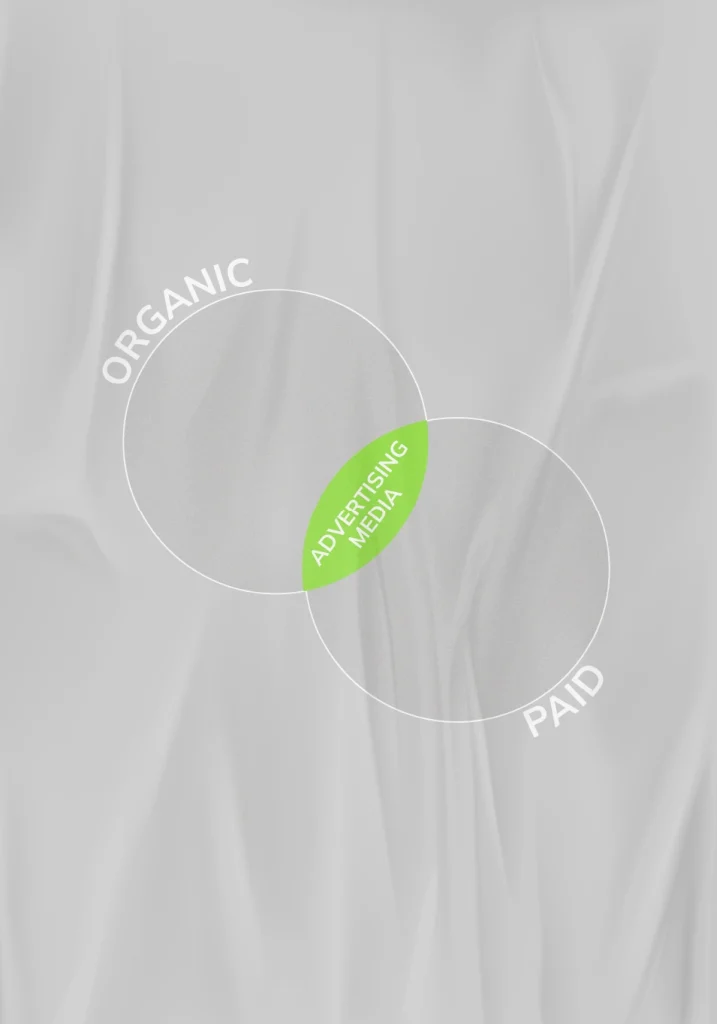Social media is now a part of our daily routine, and its position in digital marketing has increased manifold. With millions of active users globally, social media platforms have become an influential force for companies to reach their desired audience, gain brand awareness, and drive website traffic. Of the numerous methods, two popular strategies that are taking advertising by storm in 2025 are organic and paid advertising. So, what is the difference between both, and how can you balance them to improve your brand awareness and get better ROI? Let’s understand it through this blog.
Understanding organic and paid social media marketing:
1. Organic digital marketing
Organic advertising stands as a distinct strategy that relies on non-paid efforts to generate brand exposure and attract customers. This includes strategies like SEO, content marketing, social media engagement, and email marketing. The whole essence of organic marketing is that it is an ongoing process of establishing connections and building a community of your target audience. The goal is to position your business as a thought leader in your industry and build unwavering trust with your audience. Some top examples of organic marketing are:
i) SEO (Search Engine Optimization): SEO is all about making your online presence more visible by tweaking your website to improve your search engine rankings. It involves optimising content, using appropriate keywords, and improving the technical aspects of your website.
ii) Social Media Marketing: These are your communications on social media platforms like Facebook, Twitter, Instagram, and YouTube. It involves thoughtfully creating content on your social media pages to connect with your audience, spark conversations, and build relationships.
iii) Content Marketing: Content marketing involves writing and distributing blog posts and articles to various forums to build awareness for your business.
2. Paid Social Media Advertising
Paid social media advertising is simply purchasing space on social media feeds to promote your business or content. Unlike an organic social media post, a paid ad will show to a specific audience based on targeting options. The goal is to reach your target audience based on interests, demographics, and behaviours. Some formats of paid social media ads include:
i) Social media ads: Social media platforms offer advertising options such as Facebook paid marketing, Twitter promotion, and LinkedIn paid ads to allow you to target specific audiences based on demographics, interests, and behaviours.
ii) Influencer marketing: Collaborating with creators who have a substantial and engaged following on social media or other online platforms to promote your business.
iii) PPC (Pay-per-click): Pay-per-click advertising lets you tailor your campaigns to specific demographics, interests, and geographic locations. This precise targeting enables businesses to reach their ideal audience, increasing the likelihood of conversions and maximising the ROI on your budget.
Best practices for balancing organic and paid digital advertising:
1. Define your goals
Marketing goals are specific objectives defined in a marketing plan. They can be awareness or revenue generation. Having defined goals lets you envision the marketing channels you need to adopt.
2. Create organic content for authentic engagement
Organic content builds credibility and community. Regularly posting, engaging with the audience, and creating quality content (blog posts, videos, infographics) build long-term relationships without depending on ads.
3. Use Paid Advertising for Growth
Paid advertising guarantees visibility to certain groups. Platforms such as Facebook, Instagram, and LinkedIn support targeted advertising through interests, behavior, and demographics, enabling brands to reach their desired audience immediately.
4. Repurpose organic content for paid ads
Identify top-performing posts and boost them to reach wider audiences. If a post organically has high engagement, it will definitely have an impact to pull in more people
5. Test and Optimise Regularly
A/B testing headlines, photos, and CTAs to refine your strategies. Tracking analytics can help you see how much engagement and conversion organic and paid placements are generating
In summary, integrating your organic and paid social media efforts is important for achieving maximum reach, engagement, and conversions. By understanding the difference between organic and paid social media, creating specific goals and objectives, selecting the most appropriate platforms and tracking conversions, you can build an effective marketing force that produces outcomes
Frequently Asked Questions
What is digital media marketing?
Digital marketing comprises all marketing activities that utilise digital platforms. It includes social media marketing, paid advertising, content marketing, and influencer marketing.
What are the top digital media trends for 2025?
Top digital media trends for 2025 include AI-optimised content creation, voice search optimisation, reels and other short-form content, and influencer marketing.
What is the difference between organic and paid digital media?
Organic media is creating content and building authentic relationships with customers without paying for it, whereas paid digital media works by running ads for your business.
How does digital advertising work?
Digital advertising uses digital channels like Meta, YouTube, and websites to promote your business. It can be done by running search and display ads.



